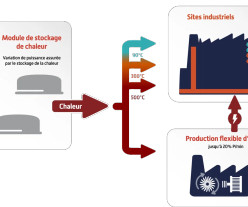Western Hydrogen produces first hydrogen from Molten Salt Gasification pilot plant
Green Car Congress
SEPTEMBER 29, 2013
Molten Salt Gasification Process. Western Hydrogen Limited reported first production of hydrogen from its Molten Salt Gasification (MSG) pilot plant in Fort Saskatchewan, Alberta. The MSG process occurs in a single high-pressure reactor in which a carbon-based feedstock and water react with a molten salt bath.














Let's personalize your content